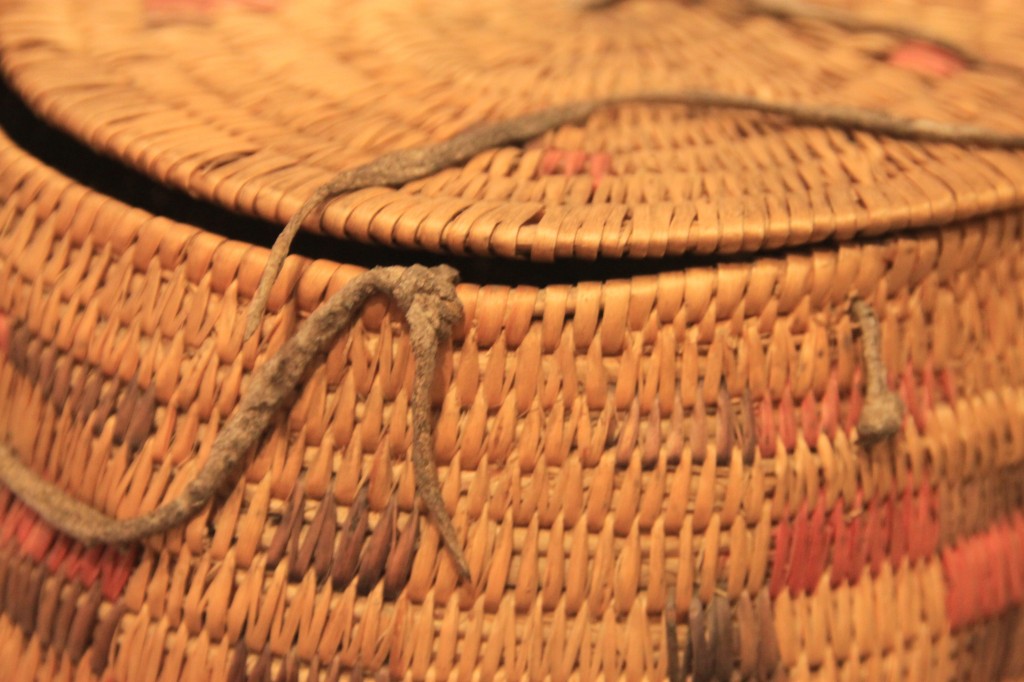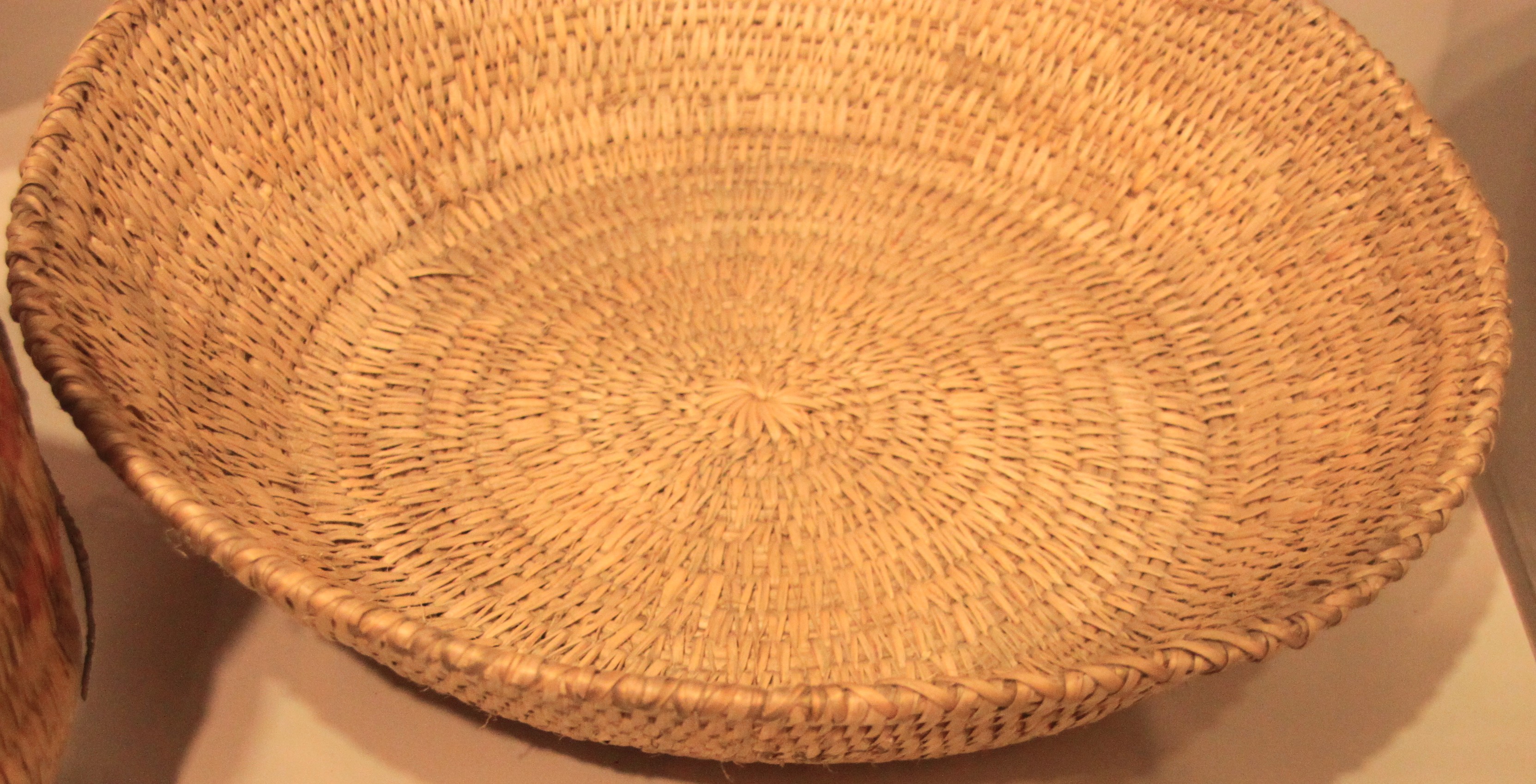Woven Legacy: The Enduring Art and Spirit of Shoshone Traditional Basketry
In the vast, rugged landscapes of the Great Basin and the Rocky Mountains, where the wind whispers through sagebrush and the rivers carve ancient paths, lies a story woven into the very fabric of the land. It is the story of the Shoshone people, and central to their enduring narrative is the profound and intricate art of traditional basketry. More than mere containers, these baskets are living testaments to resilience, ingenuity, and a deep spiritual connection to their ancestral homelands.
For millennia, the Shoshone, a nomadic people following the seasonal cycles of hunting and gathering, depended intimately on the natural world for their survival. Every resource was understood, respected, and utilized with remarkable efficiency. Among their most indispensable tools were baskets, crafted with astonishing skill from materials gathered directly from their environment. These weren’t just utilitarian objects; they were extensions of life itself, embodying knowledge passed down through countless generations, each weave a syllable in a continuous cultural conversation.

A Symphony of Materials and Mastery
The art of Shoshone basketry begins long before the first strand is woven. It commences with an intimate understanding of the land and its botanical bounty. The materials themselves – willow, sumac, yucca, cedar bark, dogbane, and devil’s claw – are not simply raw resources but partners in creation. The selection process is meticulous, guided by generational knowledge of when and where to harvest to ensure strength, flexibility, and longevity.
"You don’t just go out and cut," explains a contemporary Shoshone elder, whose voice carries the wisdom of her ancestors. "You ask permission. You thank the plant. You know its spirit, and you treat it with respect, because it’s giving its life to you." This deep reverence underscores every step. Willow branches, harvested in spring when supple, are peeled and split. Yucca leaves are painstakingly prepared, their fibers separated and dried. Dogbane, a fibrous plant, is processed into strong cords, often used for warp elements. The rich, dark accents often seen in Shoshone baskets frequently come from the root of the devil’s claw, which provides a striking contrast to the lighter hues of willow or sumac.
Once gathered, the materials undergo a meticulous preparation. Strips are soaked, scraped, and sized, ensuring uniformity and malleability. This labor-intensive process can take days, even weeks, before a single coil is laid or a single twine is begun. It is a testament to the dedication required for this art form, reflecting the value placed on the finished product.
Two primary techniques characterize Shoshone basketry: coiling and twining. Coiled baskets, typically used for water jugs or cooking vessels, are built up spirally from a central foundation. A bundle of plant fibers (the "coil") is wrapped and stitched together with a finer strand, creating a sturdy, often watertight container. The stitches can be incredibly tight and even, showcasing the weaver’s precision. Twined baskets, on the other hand, are constructed by weaving flexible horizontal elements (wefts) around rigid vertical elements (warps), creating a more open, often conical form, ideal for gathering or winnowing. Each technique demands a different set of skills and produces distinct textures and forms, yet both require immense patience, dexterity, and an almost intuitive understanding of the materials.
More Than Utility: The Soul of the Basket
The sheer variety of Shoshone baskets speaks to their integral role in daily life. Water jugs, often lined with pine pitch to make them waterproof, were essential for survival in arid lands. Large conical burden baskets, carried on the back, were used for transporting everything from firewood to harvested plants. Winnowing trays, broad and shallow, were expertly shaken to separate grain from chaff. Seed beaters, resembling small rackets, were used to knock seeds from plants into collecting baskets. Cradleboards, intricately woven, provided a safe, secure, and culturally significant place for infants. Even gambling trays, used for games of chance, were beautifully crafted, demonstrating that aesthetics and play were intertwined with utility.
But the significance of these baskets extends far beyond their practical applications. They are imbued with cultural memory, spiritual power, and personal identity. Designs, though often geometric, can symbolize natural elements – mountains, rivers, animal tracks – or reflect personal visions. The act of weaving itself is a meditative, spiritual practice, a connection to ancestors and the land. As one weaver might describe it, "When I weave, I can feel my grandmother’s hands guiding mine. The basket isn’t just made by me; it’s made by all the generations before me."

Baskets were also central to ceremonies and rituals, used for offerings, sacred objects, and as symbols of abundance and well-being. They were, in essence, containers for life – holding food, water, and the very spirit of the Shoshone people.
The Shadows of Disruption: A Legacy Under Threat
The arrival of Euro-American settlers in the 19th century brought profound and often devastating changes to Shoshone life, directly impacting their basketry traditions. Forced relocation to reservations, the imposition of new economic systems, and the assimilation policies of boarding schools actively suppressed traditional practices. Children were forbidden to speak their native languages or engage in cultural arts. The introduction of manufactured goods – metal pots, canvas bags, plastic containers – gradually replaced the need for handmade baskets, leading to a decline in the intergenerational transmission of weaving knowledge.
Access to traditional gathering areas was also severely restricted, with lands being fenced off, developed, or subjected to resource extraction that altered the delicate ecosystems where basketry materials thrived. The knowledge of where and when to find the best willow or sumac, and the proper way to harvest it sustainably, began to fade as connections to ancestral lands were severed. The continuity of this vital art form, once as natural as breathing, was fractured, threatening to extinguish centuries of accumulated wisdom.
A Resurgence of Spirit: Reclaiming the Weave
Despite the immense challenges, the Shoshone basketry tradition has demonstrated remarkable resilience. In recent decades, there has been a powerful resurgence, driven by elders determined to pass on their knowledge and younger generations eager to reclaim their cultural heritage. This revival is not just about producing beautiful objects; it is about cultural preservation, identity, healing, and sovereignty.
Cultural centers on reservations and in urban areas have become vital hubs for this renewal. Workshops are held, bringing together master weavers, often elders, with students of all ages. These classes are more than just technical instruction; they are immersive experiences where language, stories, songs, and traditional ecological knowledge are shared alongside weaving techniques. The slow, patient process of learning to weave mirrors the patience required to heal and rebuild cultural connections.
Contemporary Shoshone basket makers are not merely replicating old forms; they are innovating while honoring tradition. Some are experimenting with new designs or incorporating modern elements, while others are meticulously studying museum collections of historic baskets to rediscover lost techniques and patterns. Artists like Rosaline Penney, a revered elder from the Eastern Shoshone, dedicated her life to teaching and preserving the art, becoming a beacon for countless students. Her work, and the work of many like her, ensures that the "hands of the ancestors" continue to guide the next generation.
One contemporary artist noted, "Every time I finish a basket, it feels like I’ve completed a prayer. It connects me to my ancestors, to the land, and to the future of our people. It’s not just a craft; it’s a statement that we are still here, and our culture is strong."
Challenges remain, of course. Access to pristine gathering areas is still an issue, as is the time commitment required for this labor-intensive art in a modern world. There’s also the ongoing effort to ensure that the knowledge is passed down in a way that respects intellectual property and cultural protocols. However, the passion and dedication of Shoshone weavers are unwavering.
The enduring art of Shoshone traditional basketry stands as a powerful symbol of cultural resilience and continuity. Each carefully selected strand, each precise stitch, and each finished form represents not just a functional object or an aesthetic masterpiece, but a vibrant connection to a rich past and a hopeful future. In the rhythmic motion of hands weaving willow and sumac, the Shoshone people continue to tell their story, ensuring that their woven legacy will continue to inspire and endure for generations to come.


